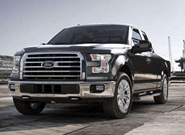Steel Markets

May Auto Sales Slump to Slowest Pace YTD
Written by David Schollaert
June 12, 2022
US automotive sales in May are expected to drop below previous forecasts and to fall to their slowest pace in 2022, Cox Automotive reported.
Declines of roughly 28% in sales year-on-year (YoY) were expected last month, though preliminary results indicate a drop of more than 29%, the automotive agency said.
“Auto sales in May are traditionally quite strong, spurred in part by the long Memorial Day weekend. But that was not the case this year,” Cox said.
New vehicle buying conditions are challenging for many would-be buyers. Borrowing costs are rising with higher interest rates, and higher gas prices are driving up vehicle operating costs as well.
Gas prices hit an all-time national average high of $4.67 on June 1. The inflationary trend is driving consumers to consider electric vehicles (EVs), hybrids, and smaller, more fuel-efficient gas-powered models, according to Kelley Blue Book (KBB).
The shopping behavior analysis by KBB indicates that the search for EVs soared 73% since January, while hybrid demand rose 25% over the same period. Shopping for more fuel-efficient gas-powered models, like small and midsize cars, rose 33% during that same timeframe.
Finding them on vehicle lots, however, is proving to be a challenge, the company said. Inventory levels for hybrids and compact vehicles remain well below the industry average.
Higher costs, coupled with a lack of available products to buy, suggest that only two types of people are still in the market: Those with immediate transportation needs and wealthier households less concerned with price points, the report said.
“Many consumers are choosing to wait, although the situation is unlikely to change quickly. And with interest rates increasing – the waiting game has downsides as well,” Cox said.
Vehicle availability will begin to improve in the months ahead but will remain historically tight throughout 2022. The reason, the automotive agency said, is ongoing supply constraints coupled with months-old order fulfilment. These dynamics are preventing significant inventory accumulation.
“With low unemployment and rising wages, there is sufficient demand for higher sales,” Cox said. “But the story is unchanged: A lack of inventory is holding the automotive industry in check.”
The seasonally adjusted annual rate of sales in May was near 12.7 million, hitting a low point of the year.
By David Schollaert, David@SteelMarketUpdate.com

David Schollaert
Read more from David SchollaertLatest in Steel Markets

CMC looks beyond Arizona micro-mill woes to long-term viability of construction mart
Despite the economic and geopolitical upheaval of the last five years, CMC President and CEO Peter Matt points out that the construction market has been an essential element of the way forward.

US importers face stricter rules under revamped S232 tariffs
“CBP expects full compliance from the trade community for accurate reporting and payment of the additional duties. CBP will take enforcement action on non-compliance," the agency said in a March 7 bulletin.

Steel exports rebound in January
US steel exports recovered to a five-month high in January after having fallen to a two-year low in December. This growth follows four consecutive months of declining exports.

Construction spending drops marginally in January
Construction spending edged down slightly in January, slipping for the first time in four months. The US Census Bureau estimated spending at a seasonally adjusted annual rate of $2,196 billion in January, down 0.2% from December’s downward revised rate. The January figure is 3.3% higher than a year ago. January’s result, despite the slight erosion, […]

HVAC equipment shipments slow in December but strong annually
Shipments of heating and cooling equipment in the US fell to an 11-month low in December, according to the latest data released by the Air-Conditioning, Heating, and Refrigeration Institute (AHRI).
